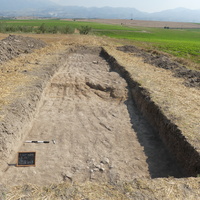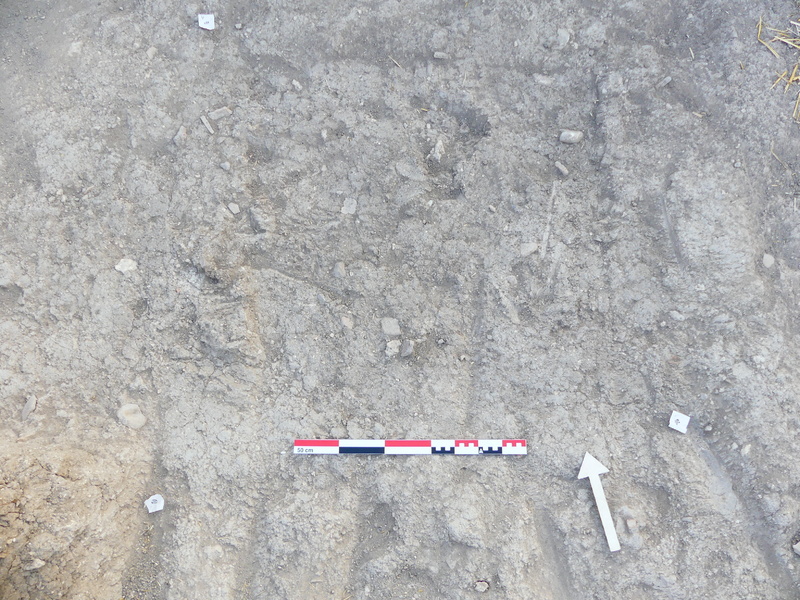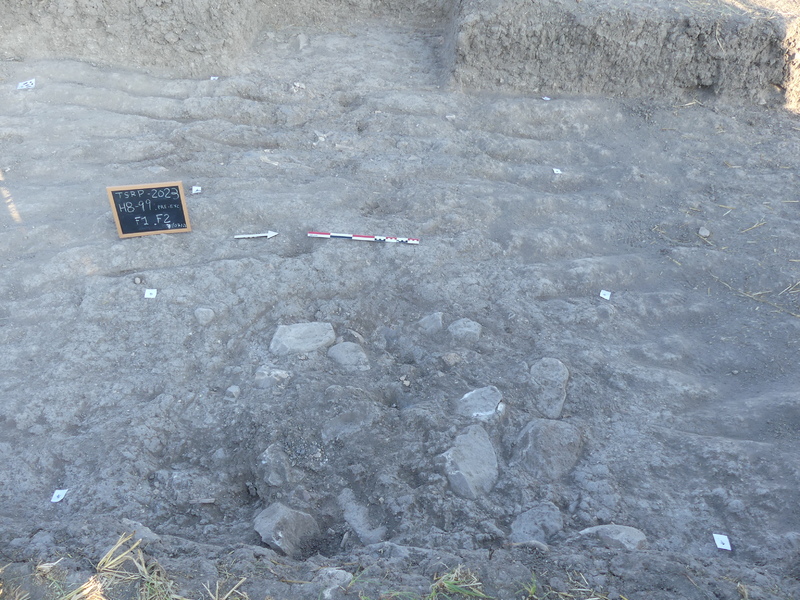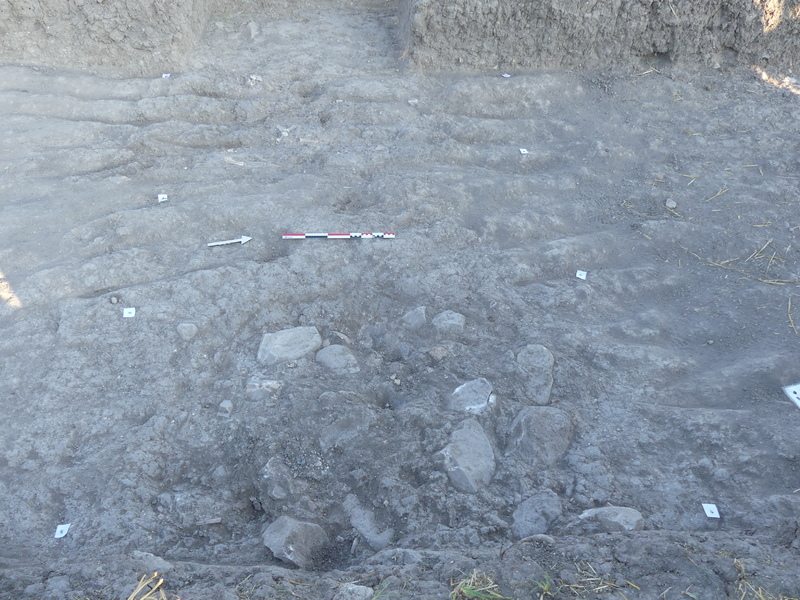The feature 1 correspond to a single primary inhumation in pit, oriented west-east, located less than one meter west to the burial F2. It has been identified by the discovery of the human skeleton c603 in primary position at 0.55 m depth, during the mechanical excavation of the topsoil. The cut (c613) and the fill (c606) were not visible. Indeed, quite close to the actual surface, it has been truncated and disturbed by the modern ploughings and the digger during the excavation.
For the burial F1, a simple oval pit (c613), measuring 1.10 x 0.70 m, oriented west-east was dug into the layer c605. Only the base of the cut (c613) was visible, defined by the difference of soil consistency with the embedding layer. Uneven and irregular, it is marked by a gentle slope of 4 cm to the east. This irregularity can explain the difference of levels of the skeletal remains. The pit contained indeed one skeleton belonging to an adult, oriented west-east, the head to the west, in flexed position on its right side, both hands close to the head, the right hand in a natural resting position. According to the first observations of the skeletal remains, the pit may have been filled by the same soil removed while digging the pit in the layer c605. No specific finds could be clearly associated with the individual. the sherds found in the fill may have belonged initially to the embedding layer. Nonetheless, three shells (c606 #10, 15, 18) and a chipedstone (c606 #11) have been recorded as special finds. It may have been associated with the deceased, but it is not possible to prove it with certainty.










